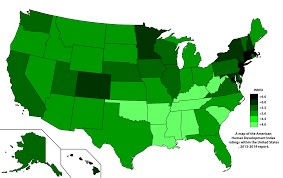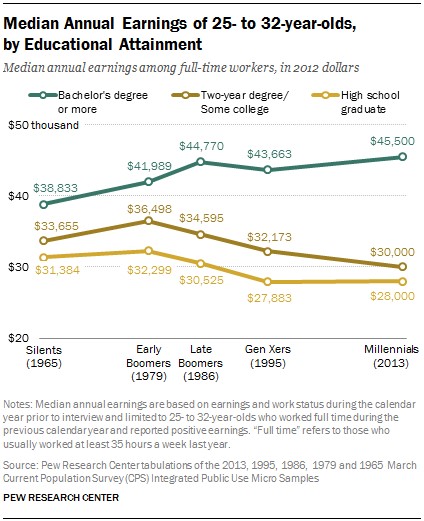Ideology in America is Driving Us Toward Civil War
There is human health and well-being, and then there is ideology. Ideology is the opposite of pragmatism. Ideology doesn’t ask, “What actually works in the real world?” Ideology already “knows” what works. The facts – well, the facts will just have to conform.
There are objective measures of human health and well-being. Income level. Educational attainment. Crime rates. Divorce rates. Teen pregnancy rates. Life expectancy. The list goes on. The problem is, ideology isn’t interested in these measures. Ideology says, “I already know what increases incomes, decreases crime, increases life expectancy, etc. And I will always push for those things regardless of facts. If the facts don’t agree with me, I will distort or ignore them.”
Ideology has become particularly strong on the American right, but it is by no means completely limited to the right. On the left we have such things as efforts to eliminate genetically modified organisms. Why? Because of ideological attachment to a vague idea of “natural” as opposed to “artificial.” “Natural” is healthy. “Natural” is better. It must be. But are GMO’s actually harmful? No. But the ideologue says they MUST be, because they’re not “natural.” The facts don’t matter. If the facts don’t agree with the ideology, they are distorted or ignored.
On the right, we have a huge array of uncritical crap, held up by a combination of fact-free emotion or huge distortions of reality. What reduces crime? More guns. What puts more money in people’s pockets? Tax reduction. What decreases teen pregnancy? Abstinence programs and religiosity. The list goes on and on.

Here in America, there is an organization called the Social Science Research Council. It has existed for decades, and publishes a report every 2 years from its American Human Development Project. This report is called The Measure of America. The last one was published in 2014. These studies examine objective measures of human health and well-being: income levels, income inequality, education levels, life expectancy, and so on. They take these various factors and create a composite index, the American Human Development Index. Each state is ranked. In 2014, the state of Connecticut ranked highest. The state of Mississippi ranked lowest. 6 of the top 10 states were in the Northeast. 9 of the bottom 10 states were in the South.
Many of the measures used to create this index are correlated with each other – average income is correlated with educational attainment, which is correlated with crime rates, life expectancy, and so on. What about crime and guns? No correlation. Income and tax rates? No correlation. Religiosity and human development? No correlation.
Why don’t we talk about these things in public discourse? Because our leaders are too busy driving ideology. It’s easy to appeal to emotion. It’s easy to appeal to our prejudices and our fears. It’s easy to tell us what we want to hear. It takes courage to tell us what we need to hear, to tell us uncomfortable truths.
The trouble is, we have a growing divide between urban, diverse, more educated America, and rural, white, less educated America. Urban, diverse America has grown tired of the resistance of rural, white America to inevitable change. Rural, white America has become increasingly entrenched and driven by ideologues who either tell them outright lies or twist the truth to the point that it is unrecognizable. The media itself is on the verge of splitting apart. In the past, major media agreed on the basic facts. Now we may see a huge chunk of the media split off and feed its constituency its own “facts.” If we can’t even agree on facts, there is no hope for dialogue.
Our country has moved into a very dangerous and delicate time. The old rules of political dialogue no longer apply. If political leaders do not step back and commit themselves to telling uncomfortable truths, we will very likely plunge into civil war. If the media do not take a stand for fact-driven dialogue, we will very likely plunge into civil war. The disconnect between ideology and reality has become so great in so many that it will take tremendous effort to avoid such a disaster.


















